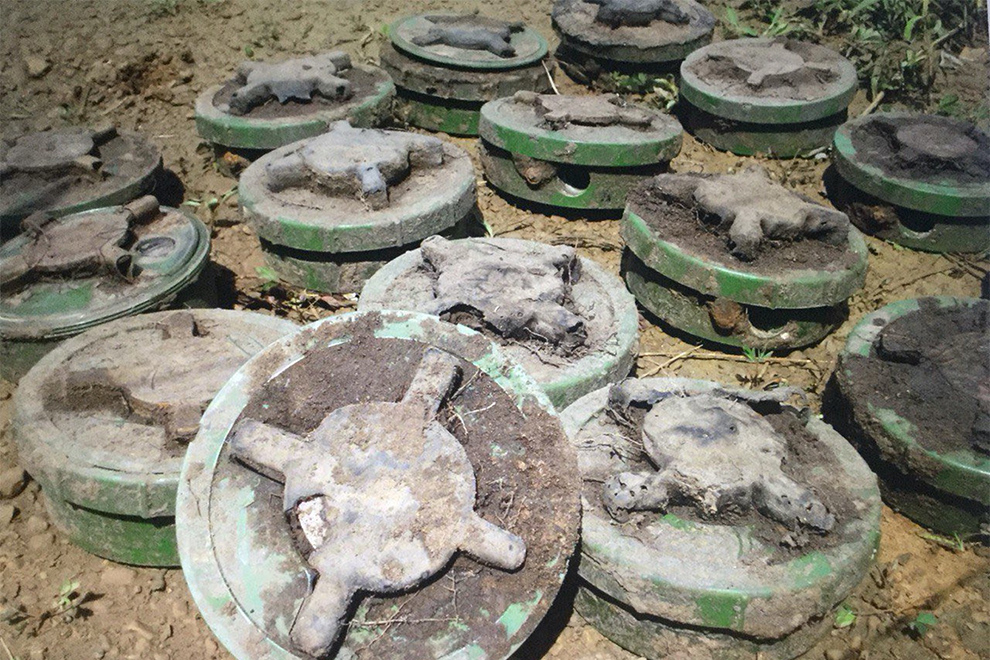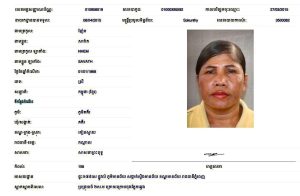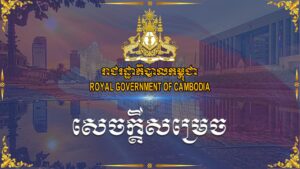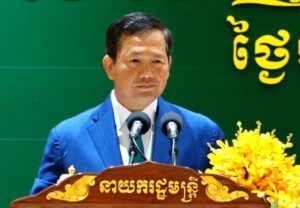Thai soldiers step on landmines in former Cambodian battlefield for second time
CMAC has made it clear that the PMN-2 mine, which Thailand accuses Cambodia of newly planting, is more powerful than the injuries sustained, and would generally lead to the loss of two legs or death. Supplied
Yesterday, July 23, a Thai soldier lost in a leg — with several others injured — when they triggered a landmine while patrolling disputed land near the Cambodian border.
With the incident almost an exact repeat of July 16 — where another young Thao soldier was maimed and others hurt — Thai officials have repeated the same claims, declaring that the mines were recently planted by Cambodian forces, on Thai soil.
The Cambodian Mine Action and Victim Assistance Authority (CMAA) issued a strong rebuttal, explaining that the two explosions that injured Thai soldiers occurred in Cambodian territory and were not the result of newly laid landmines.
Thai officials alleged that the explosions were caused by newly planted PMN-2 anti-personnel mines.
“CMAA firmly rejects this accusation and reiterates Cambodia’s full compliance with the Anti-Personnel Mine Ban Convention, which it ratified in 1999,” said a July 24 statement from the CMAA.
The mine authority noted that the most recent explosion occurred in an area marked BS/CMAA/16808, located in Techomorokot village, Morokot commune, in Choam Ksan district.
“This minefield is officially documented, remains uncleared, and forms part of Cambodia’s known inventory of legacy minefields stemming from past conflicts,” said the statement.
Additional verification from the Cambodian Mine Action Centre (CMAC) confirmed that the explosion took place entirely within Cambodian territory.
The CMAA pointed out that the type of injuries sustained in the explosion were inconsistent with those typically caused by a PMN-2 mine.
Specialists from the authority also suggested that the injuries reported were more likely the result of an older, low-yield mine, such as the Type 72A or M14, which contain significantly less explosive material compared to the PMN-2.
“By contrast, a PMN-2 mine contains more than 115 grammes of explosive and typically results in far more catastrophic injuries,” said the statement.
“Experts note that the injuries sustained in this incident are inconsistent with a PMN-2 detonation,” it added.
The CMAA emphasised several key points.
First, they confirmed that no new mines have been planted in the area, noting that the affected region is part of a longstanding minefield that continues to pose a humanitarian threat to local border communities.
The explosion occurred within an officially recorded hazardous zone, entirely within Cambodian territory, which remains uncleared.
Additionally, the CMAA highlighted Cambodia’s recognised record in demining, having cleared over 1.1 million landmines and nearly 3 million explosive remnants of war since 1992.
The country remains a leader in global demining efforts it noted, including hosting the 2024 Siem Reap–Angkor Summit of the Mine Ban Treaty.
Claims of new mine deployment are not supported by field evidence and risk undermining the spirit of cooperation essential to humanitarian mine action.
Senior Minister Ly Thuch, first vice-president of the CMAA, expressed disappointment over what he described as the manipulation of border tensions by some Thai officials, who he believed were using the incident to deflect attention from internal political issues.
He strongly disputed the suggestion that Cambodia had planted new landmines, calling it a baseless claim.
“We are exhausted from the danger of landmines and have spent over 30 years clearing them,” he said.
“Cambodia remains committed to peace, and we urge Thailand to come to the table for dialogue on border issues and joint demining operations,” he continued.
He added that landmine clearance along the border remains a complex challenge due to difficult terrain, dense vegetation and the presence of heavily contaminated areas, which require more time and resources to clear.
Despite the progress Cambodia has made in demining, Thuch noted that Thailand’s lack of cooperation on border demarcation and willingness to engage in constructive dialogue on landmine clearance remains a significant obstacle.
“It is a matter of historical record that Thai military forces and certain Thai politicians have repeatedly provoked disputes with neighbouring countries such as Cambodia, Laos and Myanmar,” he said.







